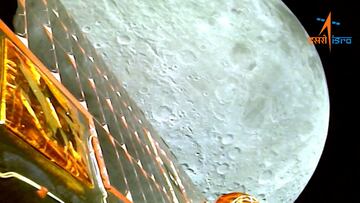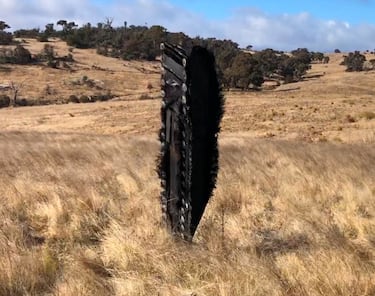How much space debris is there? Could more fines be issued for breaking rules?
The recent $150,000 fine DISH Network was the first of its kind, but what else is floating around out there following decades of satellite launches?


Space, the final frontier, is not as pristine as it once seemed. In recent years, the issue of space debris, also known as space junk, has taken center stage in discussions surrounding space exploration and satellite technology. The proliferation of satellites and the occasional reckless maneuvers by spacefaring nations have led to a growing problem that raises critical questions about the management of our orbital environment.
What was FCC’s first space debris enforcement fine?
On Monday, the Federal Communications Commission (FCC) made headlines by issuing its first space debris enforcement fine, amounting to $150,000. The recipient of this fine was DISH Network, specifically its wholly-owned unit, which failed to properly de-orbit its EchoStar-7 satellite. DISH Network admitted liability and agreed to adhere to a compliance plan.
The FCC’s move underscores its growing commitment to enforcing regulations related to space debris. The commission expressed concern that DISH’s actions “could pose orbital debris concerns” and emphasized the importance of adherence to space debris mitigation plans.
US government issues 1st-ever space debris fine, serves DISH $150k penalty https://t.co/KRaJM8J7fs pic.twitter.com/9fx65jhjRw
— SPACE.com (@SPACEdotcom) October 3, 2023
DISH’s case serves as a significant precedent, demonstrating the FCC’s determination to enforce space debris rules and regulations.
How much space debris is there and what size is it?
Space debris, or space junk, encompasses defunct satellites, discarded rocket stages, and fragments from various space missions. These objects, often traveling at incredibly high speeds, pose a serious risk to operational satellites and space stations. Space debris can be created through explosions in space or deliberate actions, such as missile tests conducted by countries like Russia, China, the United States, and India.
Professor Hugh Lewis, head of the Astronautics Research Group at the University of Southampton, aptly put it: “Every satellite that goes into orbit has the potential of becoming space debris.” As we witness the proliferation of satellite constellations from companies like Elon Musk’s Starlink and OneWeb, the issue of space debris becomes even more pressing.
According to the U.S. government, there are around 23,000 pieces of debris larger than a softball orbiting Earth. However, the real concern lies in the half a million pieces larger than 1 centimetre and a staggering 100 million pieces about one millimetre or larger. This swarm of debris orbits the Earth 15 to 16 times a day, increasing the risk of collisions.
The European Space Agency (ESA) estimates that the total mass of all space objects in Earth orbit weighs more than 9,600 tonnes. If the accumulation of space debris continues unchecked, certain regions of space may become unusable in a few decades, as Holger Krag, head of the ESA’s Space Safety Programme Office, warns.
Our MD Nick Shave was invited to comment on the issue of space debris with @BBCRajiniV. 🛰️
— Astroscale UK & Europe (@Astroscale_UK) October 4, 2023
Raising the need to move away from a throwaway culture in space, Nick highlighted the UK's strong commitment to space sustainability through the National Space Strategy, led by… pic.twitter.com/N515GA8YFP
The risk of space debris
Russia’s satellite destruction test, which generated more than 1,500 pieces of trackable orbital debris, underscores the gravity of the situation. This event occurred dangerously close to the International Space Station, forcing its crew to seek refuge in docked spaceship capsules to mitigate the risk of collision with debris.
While space debris may not directly impact space travel, it poses significant challenges for objects orbiting at altitudes around 1,000 kilometres, particularly those used for communications and Earth observation. Rapid transits through these regions remain possible, but extended stays could become increasingly perilous.
Can space debris be removed?
Efforts to mitigate the space debris problem are underway. NASA indicates that debris in orbits below 600 kilometres will fall back to Earth within several years, but objects above 1,000 kilometres can persist for a century or more. To address this, organisations like Japan’s Aerospace Exploration Agency (JAXA) and the European Space Agency (ESA) have partnered with startups to develop space debris removal missions.
Japan’s Astroscale is pioneering a debris removal project, while the ESA collaborates with Swiss startup ClearSpace for a mission scheduled in 2025. These initiatives not only tackle the hazard posed by space debris but also alleviate the financial burden on satellite operators. Protective and mitigation measures for satellites in geostationary orbits can account for 5-10% of mission costs, with even higher costs for lower Earth orbits.

Related stories
In terms of what happens next, there is a need for continued concerted efforts from nations and organisations to mitigate its impact. The FCC’s recent enforcement action against DISH Network serves as a vital step in enforcing space debris rules and regulations.
While fines and penalties can act as deterrents, and more will follow if the rules are broken, the ultimate solution lies in responsible space practices, international cooperation, and innovative technologies for space debris removal. As we continue to explore and expand our presence in space, addressing this problem is essential to ensure the long-term sustainability and safety of our activities beyond Earth’s atmosphere.

